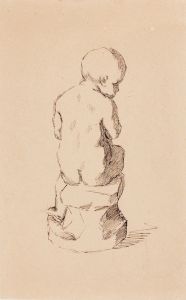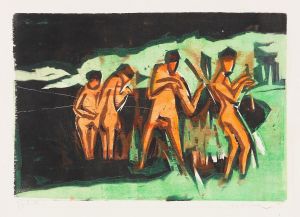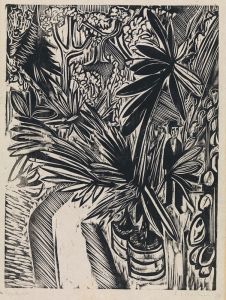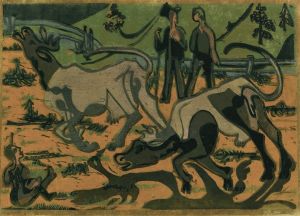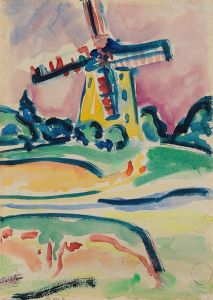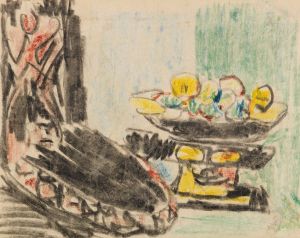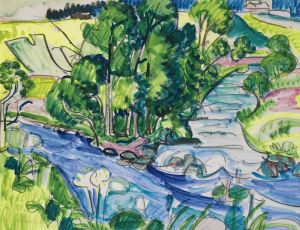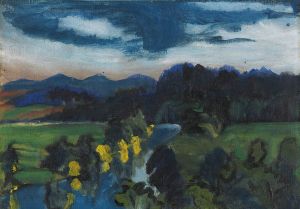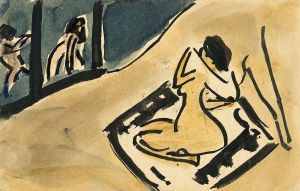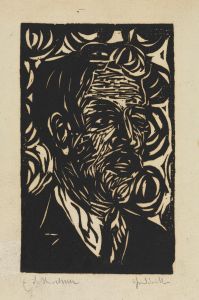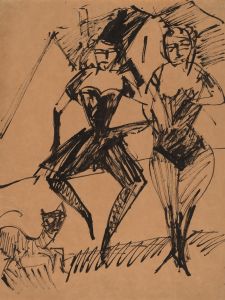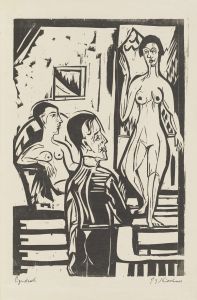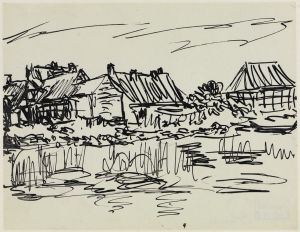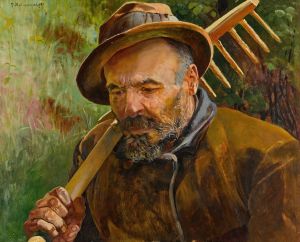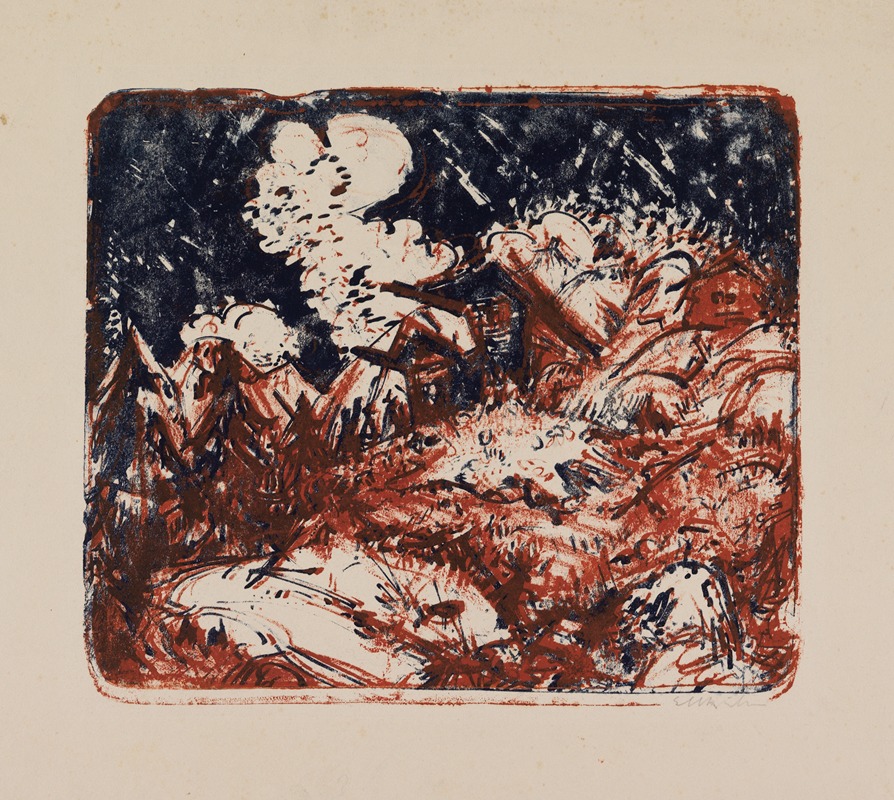
Alphütten
A hand-painted replica of Ernst Ludwig Kirchner’s masterpiece Alphütten, meticulously crafted by professional artists to capture the true essence of the original. Each piece is created with museum-quality canvas and rare mineral pigments, carefully painted by experienced artists with delicate brushstrokes and rich, layered colors to perfectly recreate the texture of the original artwork. Unlike machine-printed reproductions, this hand-painted version brings the painting to life, infused with the artist’s emotions and skill in every stroke. Whether for personal collection or home decoration, it instantly elevates the artistic atmosphere of any space.
Ernst Ludwig Kirchner, a prominent German expressionist painter, created the artwork "Alphütten" during a period marked by his deep engagement with the natural world and his exploration of the human condition through vivid, emotive color and dynamic forms. Kirchner was a founding member of the influential artist group Die Brücke (The Bridge), which played a crucial role in the development of Expressionism in the early 20th century. His work often reflects the group's ideals of bridging the past and future, tradition and modernity, through innovative artistic expression.
"Alphütten," which translates to "Alpine Huts," is a painting that exemplifies Kirchner's fascination with rural and mountainous landscapes, a theme that became increasingly prominent in his work after he moved to Switzerland in 1917. This relocation was partly due to his health issues and the traumatic experiences he endured during World War I. The Swiss Alps provided Kirchner with a serene and inspiring environment, which significantly influenced his artistic output during this period.
In "Alphütten," Kirchner captures the rustic charm and simplicity of alpine life. The painting features a cluster of traditional Swiss huts nestled within a mountainous landscape. Kirchner's use of bold, expressive brushstrokes and a vibrant color palette conveys a sense of movement and vitality, characteristic of his style. The composition is dynamic, with the angular forms of the huts and the surrounding landscape creating a sense of harmony and tension.
Kirchner's approach to color in "Alphütten" is particularly noteworthy. He employs a range of intense, non-naturalistic colors to evoke emotional responses and to emphasize the spiritual connection between humans and nature. This use of color is a hallmark of Kirchner's work and reflects his belief in the expressive power of art to transcend the mundane and reveal deeper truths.
The painting also reflects Kirchner's interest in the interplay between civilization and nature. The alpine huts, symbols of human habitation and culture, are depicted in harmony with the natural landscape, suggesting a peaceful coexistence. This theme resonates with Kirchner's broader artistic vision, which often sought to reconcile the tensions between modernity and tradition, urban life and nature.
"Alphütten" is an example of Kirchner's mature style, characterized by a synthesis of form and color that captures the essence of his subjects. The painting is not only a testament to his technical skill and artistic vision but also a reflection of his personal journey and the transformative impact of his environment on his work.
Today, Kirchner's "Alphütten" is appreciated for its contribution to the Expressionist movement and its ability to convey complex emotions and ideas through visual means. The painting continues to be studied and admired for its innovative use of color and form, as well as its insight into the artist's life and the cultural context of the early 20th century.





